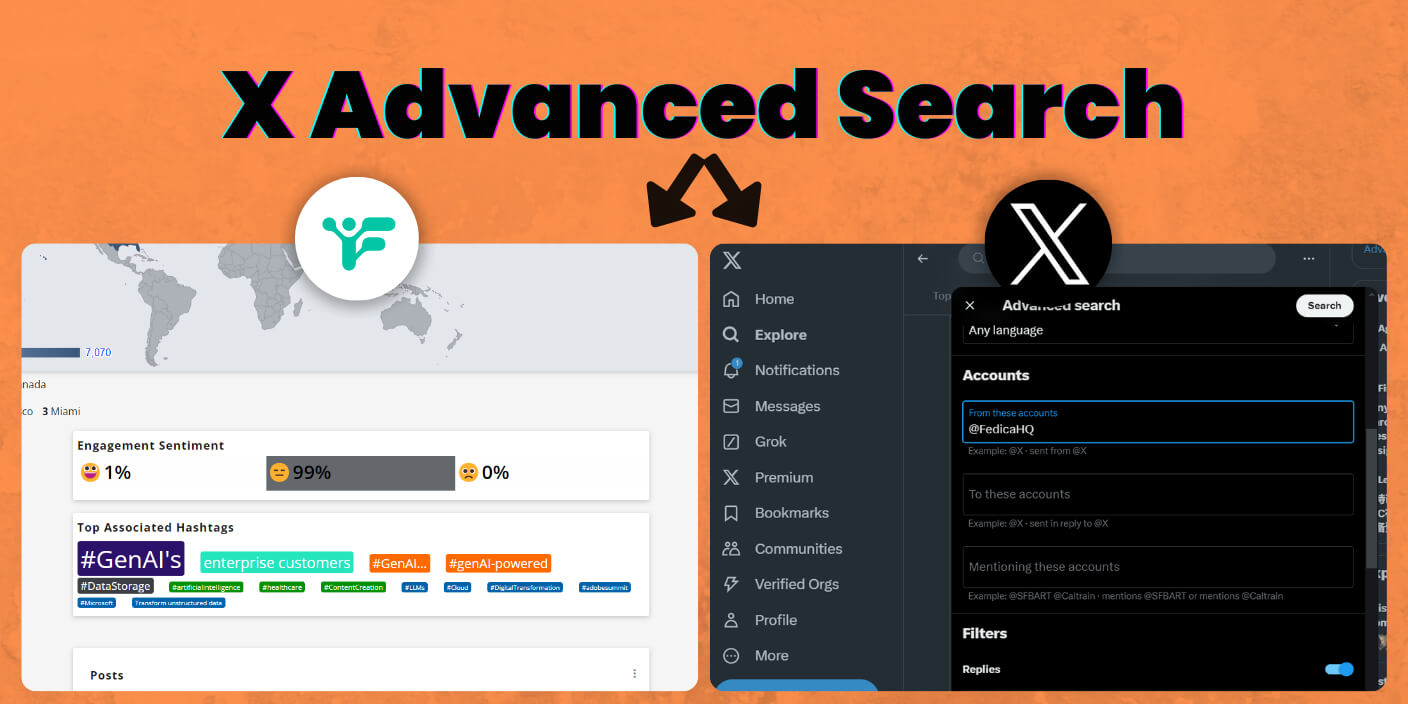Ever felt like finding that one tweet is like searching for a needle in a haystack? You’re not alone. Twitter / X advanced search can filter posts easily, but it’s just the tip of the iceberg.
Did you know you can use it to get content ideas from what people are looking for?
You’ll see how it works, where to find it and how it can drive your content ideas below.
Twitter’s Advanced Search Mobile
Looking for Twitter advanced search mobile options? Yes, its possible on mobile.
Twitter’s Advanced Search Desktop: The Basics

First things first, let’s talk about Twitter’s built-in advanced search. To access it, head to Twitter’s search page and click on the three dots next to the search bar. Then select “Advanced search.” Here’s where the magic happens.
Mastering Twitter’s Advanced Search with Boolean Operators
These operators allow you to create precise, targeted searches that can help you find exactly what you’re looking for.
Here are some key terms to know:
Limit Twitter Search
AND: Find posts containing multiple terms
Example: climate AND action AND policy
This search will return tweets that contain all three terms: climate, action, and policy. It’s great for finding posts that discuss specific combinations of topics.
Broaden Twitter Search
OR: Find posts with any of the specified terms
Example: (iPhone OR Android) AND “battery life”
This search will find tweets discussing battery life in relation to either iPhones or Android phones. The parentheses group the OR terms together.
Filter Out Words
– (minus sign): Exclude specific words
Example: cryptocurrency -bitcoin
This search will find tweets about cryptocurrency but exclude those mentioning bitcoin, helping you focus on alternative cryptocurrencies.
Exact Phrase Search
“” (quotation marks): Search for exact phrases
Example: “social media marketing” AND (tips OR strategies)
This will find tweets containing the exact phrase “social media marketing” along with either “tips” or “strategies,” perfect for finding advice on the topic.
Twitter User Search
from: Find posts from a specific account
Example: from:NASA AND (Mars OR Moon) since:2023-01-01
This search will find tweets from NASA’s official account about Mars or the Moon posted since January 1, 2023.
Twitter Mention Search
to: Find posts directed at a specific account
Example: to:SpaceX AND (congratulations OR amazing)
This will show you positive responses directed at SpaceX’s Twitter account.
Twitter Timespan Search
since: and until: Use these for date ranges
Example: “artificial intelligence” AND ethics since:2023-06-01 until:2023-12-31
This search will find discussions about AI ethics posted in the latter half of 2023.
Combining Operators for Complex Searches:
You can combine these operators to create highly specific searches. For example:
(renewable OR sustainable) AND energy AND (policy OR legislation) from:govuk since:2023-01-01 -nuclear
This complex search will find:
- Tweets from the UK government account (@govuk)
- Posted since January 1, 2023
- Containing either “renewable” or “sustainable”
- And also containing “energy”
- And also containing either “policy” or “legislation”
- But excluding any tweets mentioning “nuclear”
This kind of search could be invaluable for researchers, journalists, or anyone interested in finding specific posts.
Try combining different operators to refine your searches and discover the wealth of information available on X.
You can add these terms in the menu below and they will type out the way they are formatted above automatically!
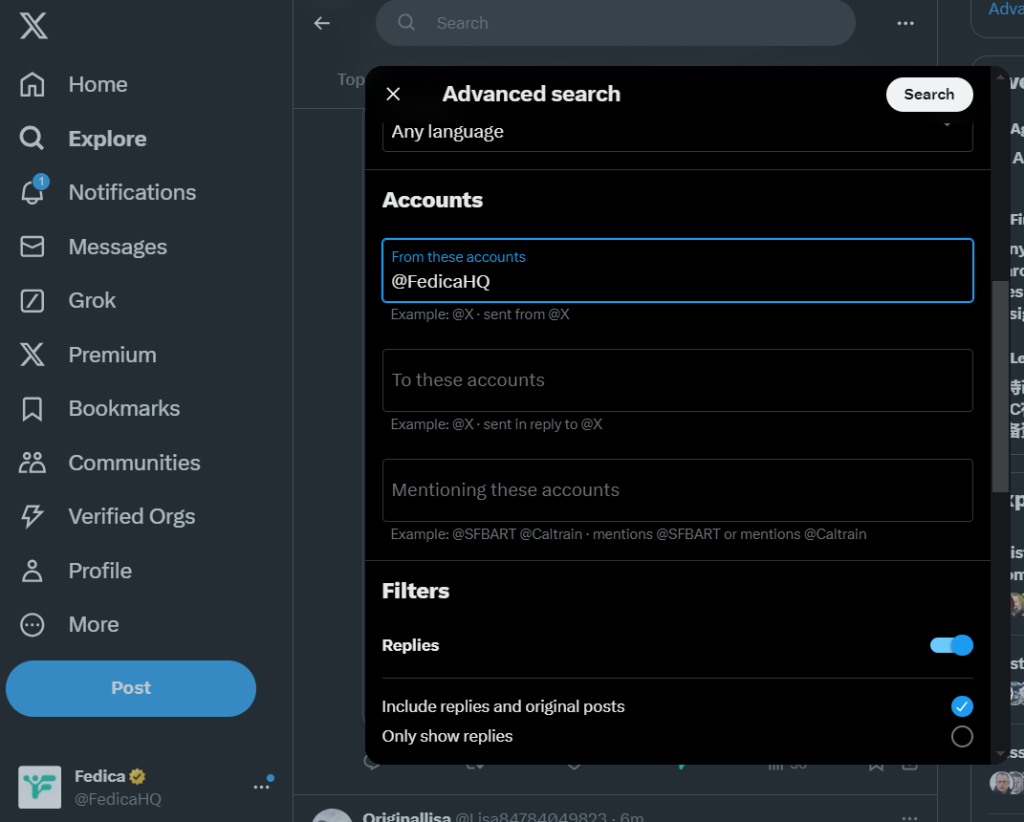
These tools can help you find specific posts, but what if you want to do more? What if you want to really dive deep into Twitter’s ocean of data?
Beyond Basic Twitter Advanced Search: What’s Missing
Twitter advanced search is useful, but it’s limited, just like their X analytics doesn’t map followers and let you filter your engagements! It doesn’t let you search through people’s followers, analyze conversations with Twitter hashtag analytics, or find users based on their bio content or engagement patterns. So Fedica gives you those tools you can use to find anything and even use as your content strategy.
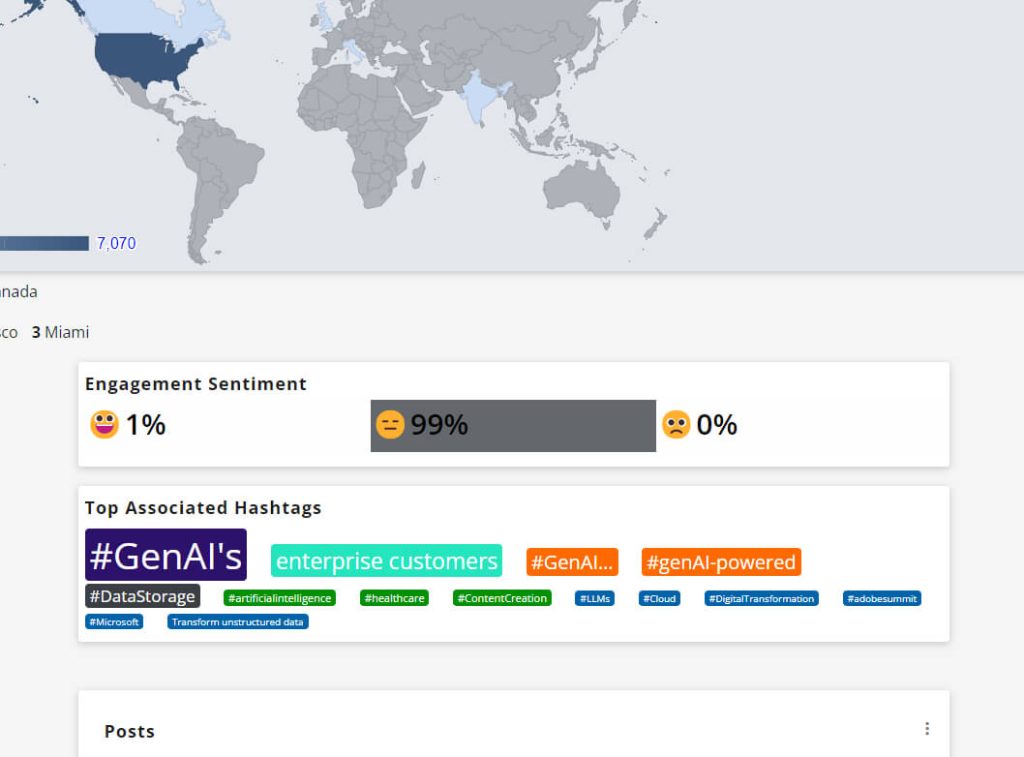
Imagine being able to:
- Search through your own followers to run a Twitter fake follower check or find Twitter verified followers
- Find people based on bio keywords or the content they regularly post about
- Analyze entire conversations or campaigns to gauge engagement and sentiment
- Discover potential collaborators or leads by searching through people following specific accounts
These capabilities to Find Accounts in Search & Explore Tool go beyond simple searches.
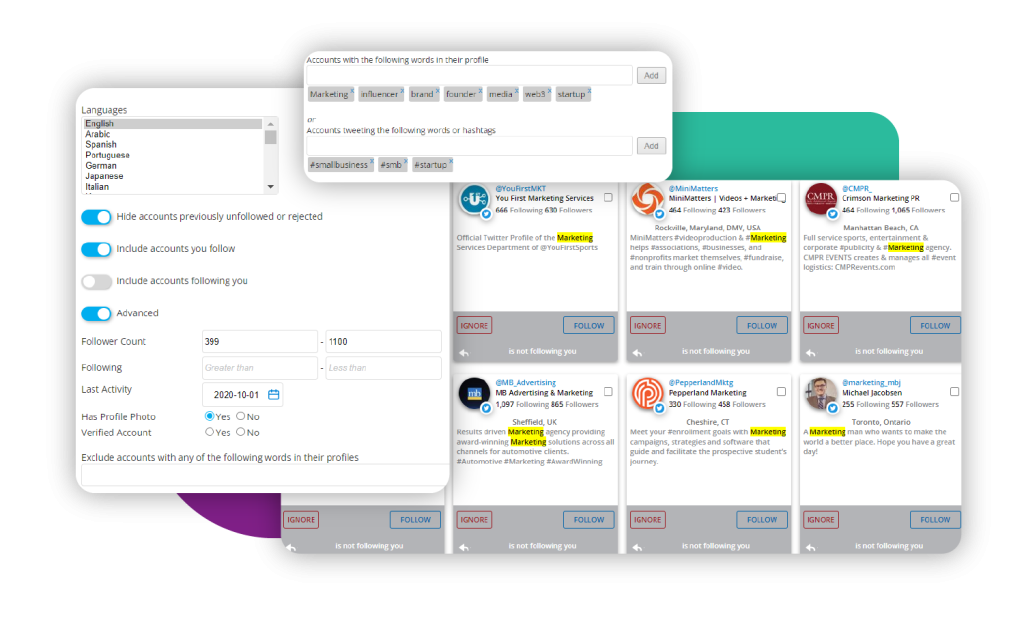
They allow you to truly explore and understand the Twitter ecosystem, opening up new possibilities for networking, marketing, and relevant content strategy.
Example: let’s say you’re a tech enthusiast looking to grow your following. With advanced tools, you could search for users who frequently tweet about AI and machine learning, have over 1000 followers, and are located in Silicon Valley.
This level of targeting can help you connect with the right people and grow effectively.
Example: maybe you’re a brand looking to launch an influencer campaign. Wouldn’t it be great if you could search for users who not only have a large following but also consistently engage with content related to your product?
This kind of in-depth search and analysis can significantly improve your outreach efforts.
Never-Ending Content Strategy With Twitter Advanced Search
One of the most effective content marketing strategies is answering the real questions your ideal customers are asking.
1️⃣ Search bits of questions people ask in your niche to get more answers
2️⃣ See what others post, use those results to see if you can ask more simple or specific questions
3️⃣ Improve on posts you see that did well, adding your unique twist, and make sure to make useful content, not just informational content.
Information is cheap these days, so your twist on the content can simply be a useful way of helping people with your content rather than providing information in another way.
But how do you find these questions?
And once you do, how can you ensure you’re reaching the right audience with your answers?
Let’s dive into how Fedica can help you master this approach.
Share the post below to help your community help others!
Step 1: Uncover Conversations and Questions with Keyword Analysis
Start your journey by diving deep into relevant conversations using Fedica’s powerful Hashtag and Keyword Analysis tool:
- Choose broad keywords or hashtags related to your industry or niche.
- Run an analysis using the Hashtag and Keyword report.
- Examine the resulting conversations to identify:
- Questions being asked by users
- Topics generating confusion or debate
- Recurring themes that seem to spark curiosity
This tool not only pulls in conversations but also provides valuable demographic data about the people involved. You’ll be able to see:
- Age ranges
- Locations (Country, Region, City)
- Occupations
- And other key demographic information
Pro tip: Look for question phrases like “how to,” “what is,” or “why does” within these conversations to quickly spot direct inquiries from your potential audience.
Step 2: Expand Your Reach with Search & Explore
Now that you’ve identified key questions and the demographics of people asking them, it’s time to broaden your search using Fedica’s Search & Explore tool:
- Take the most popular keywords and phrases uncovered in your Hashtag and Keyword report.
- Use these as search terms in the Search & Explore tool.
- Apply demographic filters based on the data you gathered from the keyword analysis to ensure you’re finding similar audiences.
- Look for:
- Additional users asking similar questions
- Influencers or thought leaders addressing these topics
This two-step process allows you to:
- Start with a focused, data-rich analysis of specific conversations
- Then expand your search to find a wider audience with similar interests and questions
By using the Hashtag and Keyword report as your starting point, you ensure that your expanded search in Search & Explore is grounded in real, relevant conversations. This approach helps you uncover not just questions, but questions from an audience that matches your target demographic profile.
Step 3: Identify Your Most Valuable Followers
Now that you have a list of relevant questions from your target audience, use Fedica’s Sort Followers (Follower Segmentation) tool to search in Twitter followers to see who matches this ideal customer profile:
- Apply filters based on the demographic and interest data you gathered from your keyword analysis.
- Create a list of these followers – they’re your prime audience for your content strategy.
Step 4: Craft Your Content Strategy with Twitter Advanced Search
With your questions identified and your audience validated, you’re ready to create content that truly resonates:
- Use those proven questions to find variants on X / Twitter Advanced Search and look at the content you see. Improve on it and add your unique perspective.
- Conversations that might have been missed in the initial keyword report
- Develop blog posts, posts, or schedule Twitter threads that directly answer the questions you’ve uncovered.
- Use the language and tone that your audience uses when asking these questions.
- Share your content strategically, targeting the followers you identified in Step 3.
Pro Tip: Fedica automatically posts at the times when your followers are online, grouped by time zone. So you can make content based on the locations of people from your Twitter Hashtag analytics Report when you take a look at only people from certain locations on the map!
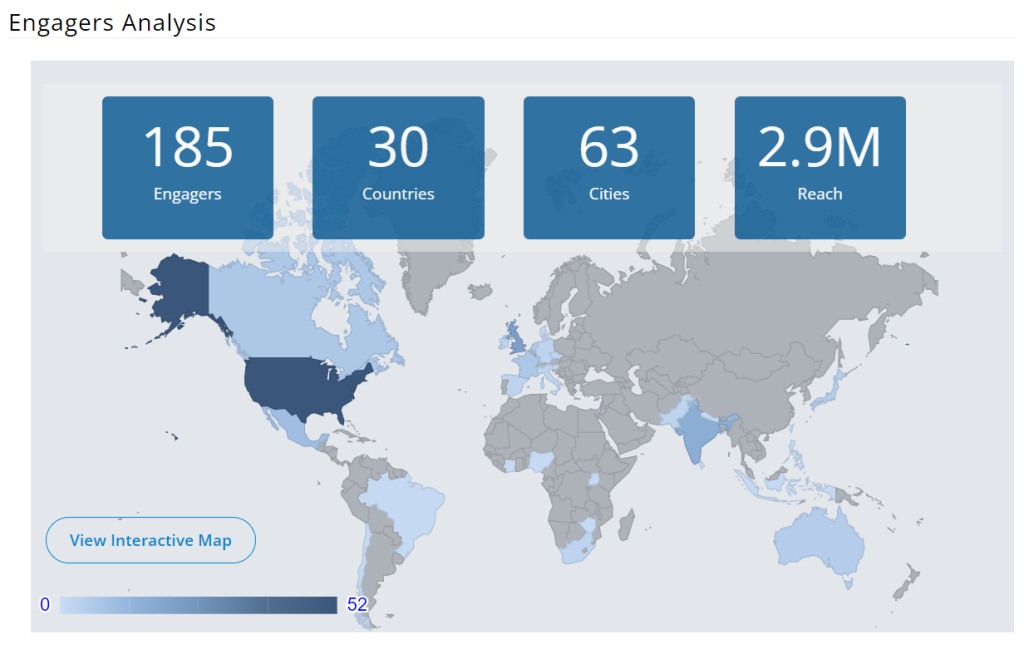
Why This Approach Works
By using Fedica to search for and validate questions from your ideal customers, you’re:
- Creating content that you know your audience wants
- Addressing real pain points and concerns
- Positioning yourself as a helpful authority in your niche
- Increasing the likelihood of engagement and shares
By combining the Search & Explore tool, Hashtag and Keyword Analysis, and the Sort Followers feature, you get a comprehensive strategy that speaks to your ideal customers.
It’s about finding the right questions from the right people and delivering answers in a way that builds your brand and grows your audience.

